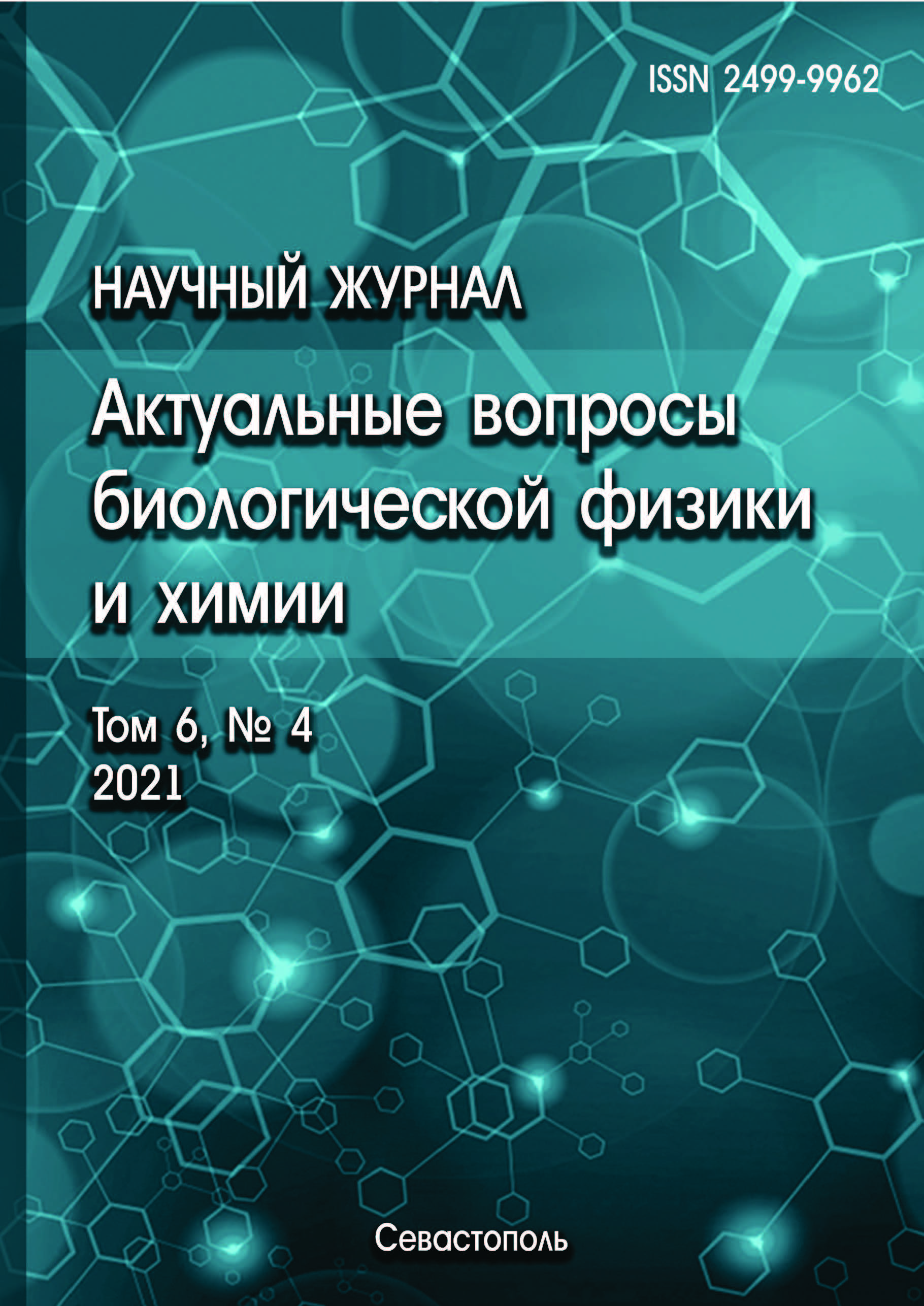Sevastopol, Sevastopol, Russian Federation
Sevastopol, Sevastopol, Russian Federation
Dunaliella is a genus of microalgae that grows in hypersaline ponds. A high concentration of β-carotene and glycerol, which perform protective functions, allows them to exist in such conditions. The high accumulation of these biologically active substances determines the prospects of using D. salina in biotechnology. One of the most promising IBSS-2 strain from the common use center “World Ocean hydrobionts collection”, was studied in order to clarify its taxonomic status. Phylogenetic analysis showed a high degree of homology with D salina CCAP 19/31, which allows us to attribute the studied isolate to the species Dunaliella salina.
hydrobionts, molecular genetic analysis, phylogeny, Dunaliella salina
1. Masyuk N.P. Morfologiya, sistematika, ekologiya, geograficheskoe rasprostranenie roda Dunaliella Teod. K.: Naukova dumka, 1973, 244 c. @@Masyuk N.P. Morphology, taxonomy, ecology, geographical distribution of the genus Dunaliella Teod. K.: Naukova Dumka, 1973, 244 p. (In Russ.)
2. Borovkov A.B. Zelenaya mikrovodorosl' Dunaliella salina Teod. (obzor). Ekologiya morya, 2005, t. 67, c. 5-17. @@Borovkov A.B. Green microalgae Dunaliella salina Teod. (overview). Ecology of the sea, 2005, vol. 67, pp. 5-17. (In Russ.)
3. Highfield A., Ward A., Pipe R., Schroeder D. Molecular and phylogenetic analysis reveals new diversity of Dunaliella salina from hypersaline environments. Journal of the Marine Biological Association of the United Kingdom, 2021, vol. 101, no. 1, pp. 27-37. doi:https://doi.org/10.1017/S0025315420001319
4. Preetha K., John L., Subin C.S., Vijayan K.K. Phenotypic and genetic characterization of Dunaliella (Chlorophyta) from Indian salinas and their diversity. Aquat. Biosyst., 2012, vol. 8, no. 27. doi:https://doi.org/10.1186/2046-9063-8-27 EDN: https://elibrary.ru/THWFZD
5. Huelsenbeck J.P., Ronquist F. MRBAYES: Bayesian inference of phylogeny. Bioinformatics, 2001, vol. 17, pp. 754-755. EDN: https://elibrary.ru/ILEVUZ
6. Emami K., Hack E., Nelson A., Brain C.M., Lyne F.M., Mesbahi E., Day J.G., Caldwell G.S. Proteomic-based biotyping reveals hidden diversity within a microalgae culture collection: An example using Dunaliella, 2015. doi:https://doi.org/10.1038/srep10036
7. Ben-Amotz A. Effect of irradiance and nutrient de ciency on the chemical composition of Dunaliella bardawil Ben Amotz and Avron (Volvocales, Chlorophyta). J. Plant. Physiol., 1987, vol. 131, pp. 479-487.
8. Assuncao P., Jaen-Molina R., Caujape-Castells J., de la Jara A., Carmona L., Freijanes K., Mendoza H. Molecular taxonomy of Dunaliella (Chlorophyceae), with a special focus on D. salina: ITS2 sequences revisited with an extensive geographical sampling. Aquat. Biosyst., 2012, vol. 8, no. 2. doi:https://doi.org/10.1186/2046-9063-8-2 EDN: https://elibrary.ru/FRLAVY
9. Polle J.E.W., Jin E.S., Ben-Amotz A. The alga Dunaliella revisited: Looking back and moving forward with model and production organisms. Algal Res., 2020. doi:https://doi.org/10.1016/j.algal.2020.101948 EDN: https://elibrary.ru/EWJNSZ
10. Gudvilovich I.N., Borovkov A.B. Aprobaciya dvuhstadiynogo kul'tivirovaniya Dunaliella salina (Teodoresco, 1905) v Sevastopol'skom regione. Yug Rossii: ekologiya, razvitie, 2019, t. 14, № 2, c. 211-220. doi:https://doi.org/10.18470/1992-1098-2019-2-211-220 @@Goodvilovich I.N., Borovkov A.B. Approbation of two-stage cultivation of Dunaliella salina (Teodoresco, 1905) in the Sevastopol region. South of Russia: ecology, development, 2019, vol. 14, no. 2, pp. 211-220. (In Russ.) doi:https://doi.org/10.18470/1992-1098-2019-2-211-220 EDN: https://elibrary.ru/AHMCZB
11. Borovkov A.B., Gudvilovich I.N., Avsiyan A.L. Scale-up of Dunaliella salina cultivation: from strain selection to open ponds. Journal of Applied Phycology, 2020, vol. 32, iss. 3, pp. 1545-1558. DOI: https://doi.org/10.1007/s10811-020-02104-5; EDN: https://elibrary.ru/EWPPDB










